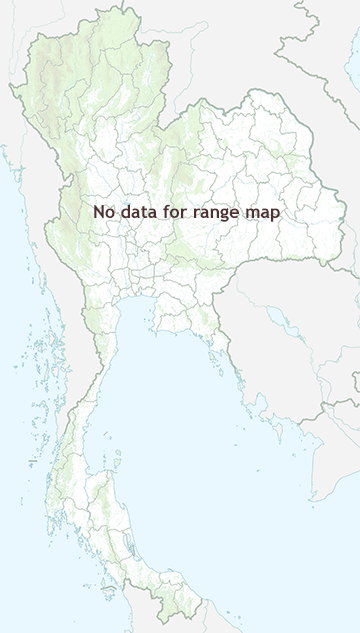Species of Thailand
Great evening bat
Ia io
Michael Rogers Oldfield Thomas, 1902
The great evening bat (Ia io) is a bat in the vesper bat family (Vespertilionidae) and the only living species in the genus Ia. It is common to Eastern and Southeastern Asia (China, India, Laos, Nepal, Thailand and Vietnam), mainly living in areas with limestone caves at altitudes of 400 - 1700 m. Their roost sites have been found both near the cave entrances and up to 1.5 km within the cave systems.
The great evening bat reaches a length of 90 to(-) 105 mm. It is colored brown on the top and grayish on the bottom.
Not much is known about its habits and behavior. The bat usually lives in small groups. Its food consists of insects, as with most vesper bats. The Asian great evening bat also sometimes feeds on small birds The bat leaves its sleeping place already in the late afternoon for the search of food. During the winter months it may migrate to warmer regions.
The IUCN lists its conservation status as Least Concern. One of the threats to its survival in South Asia is human influence by habitat destruction; many caves have been turned into attractions. They have also been disturbed by farmers collecting their excrement. Also the excessive use of insecticides poses a threat to the great evening bats.
At four letters, Ia io is tied with Yi qi for the shortest existing (and shortest possible) scientific name of any animal under the International Code of Zoological Nomenclature, and is one of very few scientific names composed solely of vowels.
This article uses material from Wikipedia released under the Creative Commons Attribution-Share-Alike Licence 3.0. Eventual photos shown in this page may or may not be from Wikipedia, please see the license details for photos in photo by-lines.
Scientific classification
- Kingdom
- Animalia
- Phylum
- Chordata
- Class
- Mammalia
- Order
- Chiroptera
- Family
- Vespertilionidae
- Genus
- Ia
- Species
- Ia io
Synonyms
- Ia longimana, Pen (1962)
- Pipistrellus io, Michael Rogers Oldfield Thomas (1902)
Conservation status

Near Threatened (IUCN3.1)
Photos

Range Map
